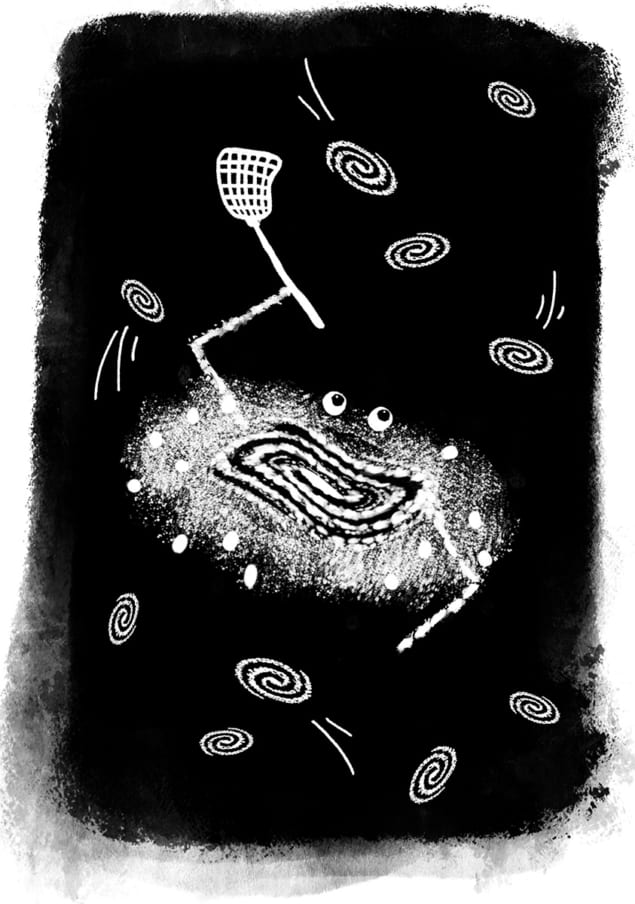Cait Cullen reviews The Milky Way: an Autobiography of our Galaxy by Moiya McTier

Like almost every astronomer, I have looked to the stars and dreamt of objects far larger than I can realistically comprehend. But never in my deepest daydreams have I imagined a sarcastic, egotistical, lonely galaxy telling its story through a series of anecdotes and thinly veiled barbs.
In The Milky Way: an Autobiography of our Galaxy, US astrophysicist Moiya McTier unfurls the story of the Milky Way as we know it (or, as the narrator would pointedly note, as we think we know it). This is a story we’ve heard time and time again, but here it’s presented with one crucial quirk: McTier tells the tale from the perspective of the galaxy itself.
In an age when technological advances are letting astronomers look at ever-more distant objects in the universe, McTier’s revolutionary story brings the focus back to the magnificent galaxy we call home. The Milky Way deftly spans great stretches of time and space, from the creation of the galaxy nearly 14 billion years ago, to its long-awaited collision a few billion years in the future, and finally to its inevitable doomsday.
Each of the 15 chapters tackles a different aspect of our galaxy’s story, including a list of its many names, illustrations of its shape and structure, and detailed descriptions of other nearby entities. The story follows the Milky Way as it grows up: experimenting with the birth of new stars (and mourning countless others), making friends (and crushes) or sworn enemies of its neighbours, and battling the supermassive black hole at its centre.

Gaia releases most detailed maps of the Milky Way ever taken
Nestled within this intricate, meandering autobiography is a story of how we humans have viewed the milky blanket of stars strewn across the sky through an ever-changing array of legends, myths and theories. One chapter – aptly titled “Death” – explores the most promising human theories on how the universe will end. Whether it’s the Big Rip, Freeze, Crunch, Bounce or Slurp, the narrator diligently explains the science behind each scenario in a way that will appeal to experienced astronomers and amateur space enthusiasts alike.
Sprinkled throughout the book are quirky and humorous intermissions, lending it a casual, informal feel. For example, the description of the relationship between the Large and Small Magellanic Clouds (or Larry and Sammy, as the Milky Way calls them) has our galaxy salaciously waggling the stars that form its “eyebrows” before discussing the two bodies’ respective star-formation rates. (If your mind works anything like mine, you’ll spend days wondering which stars those might be and how the waggle would be created.)
Moiya McTier presents a complete history of the galaxy all wrapped within a captivating story of knowledge, friendship and self-awareness
With the ever-expanding depth and breadth of astronomical knowledge, science writers and communicators nowadays are constantly trying to find stimulating methods to convey complex topics. In The Milky Way, McTier has more than achieved this goal. She presents a complete history of the galaxy – along with tricky concepts such as the distance ladder, nucleosynthesis and dark matter – all wrapped within a captivating story of knowledge, friendship and self-awareness.
There’s even romance. We know that Andromeda will eventually collide with our galaxy as a story of chaos and doom, but McTier presents this event with a mix of excitement and hope. “Andromeda and I are going to merge so completely in just a few billion years that we’ll essentially become one galaxy,” she writes. “We’ll die at the same time, and I won’t have to worry about leaving anyone I care about behind.”
McTier unfolds a story so absurdly characterful and riveting, that you almost don’t notice how much you’re being taught
The Milky Way is truly a work of art – and not just because of its fantastical illustrations by AnnaMarie Salai. McTier unfolds a story so absurdly characterful and riveting, that you almost don’t notice how much you’re being taught. The lonely, but somewhat hopeful, voice of the Milky Way transports the reader into the realm of galaxies, gas clouds and the vast expanses of space.
Throughout the book, you’re encouraged to look at scientific concepts from an entirely new perspective, with McTier’s almost poetic prose providing a dreamlike quality to near-incomprehensible topics. Fortunately, when it comes to unanswered questions, the author does not give credibility to unproven concepts, instead describing current theories as we best understand them.

First-ever image of the black hole ‘shadow’ at the heart of the Milky Way revealed by the Event Horizon Telescope
When discussing the ambiguous end to the universe, for example, the Milky Way simply states: “Don’t worry, I won’t spoil the ending for you, though I will tell you what your human scientists think could happen.” I, for one, have never had such a garrulously enigmatic teacher.
If you’re looking for a book that will reveal the answers to hard-kept astronomical secrets, you might be disappointed. What you will find, though, is a witty, romantic and innovative account of everything humans currently know about the galaxy we live in. McTier has created the perfect ode to our incomprehensibly vast home – a flawless blend of respect and curiosity that gives voice to one of the most relentlessly studied objects in our universe.
- 2022 Grand Central Publishing 256pp $27.00hb



